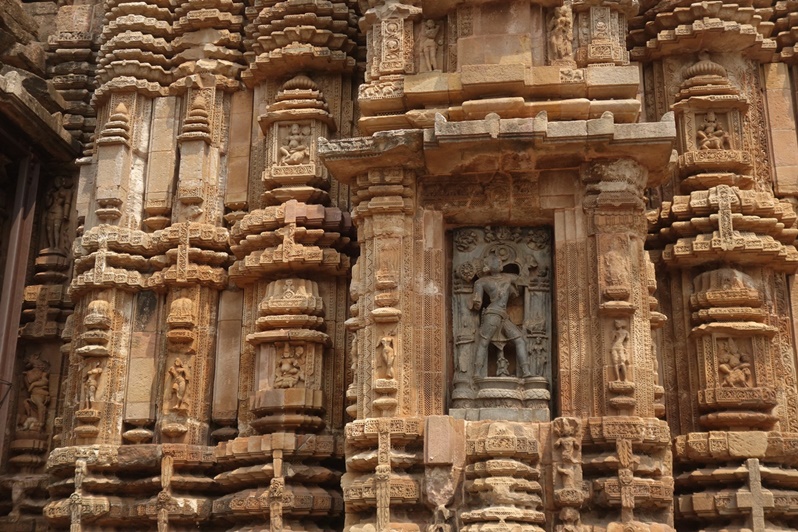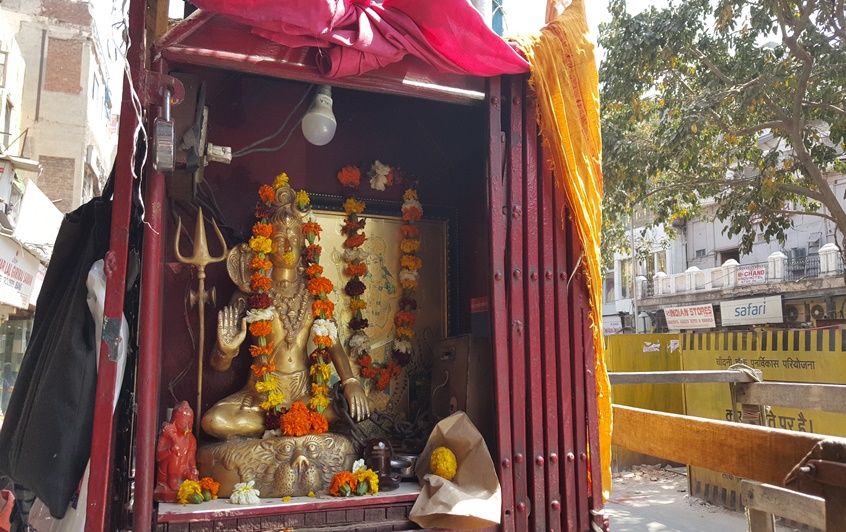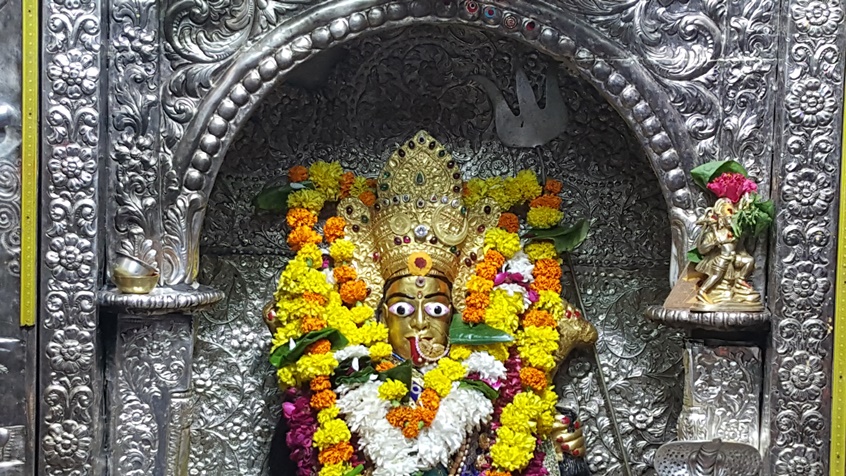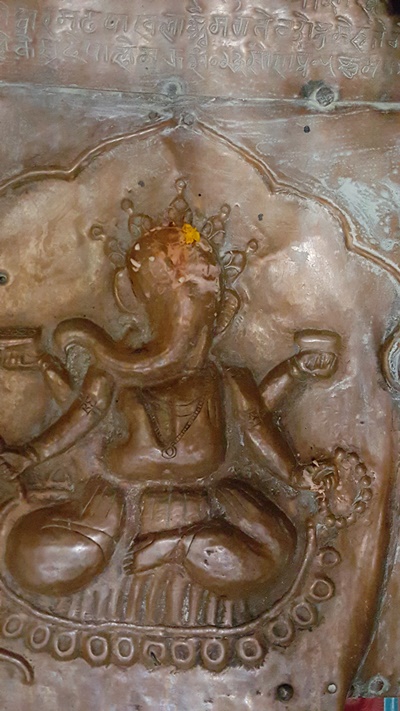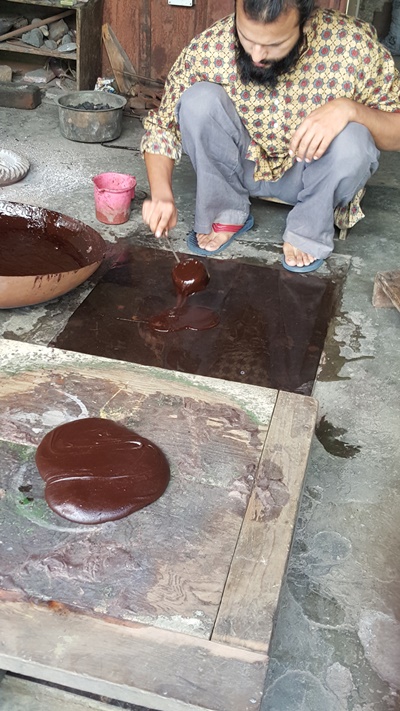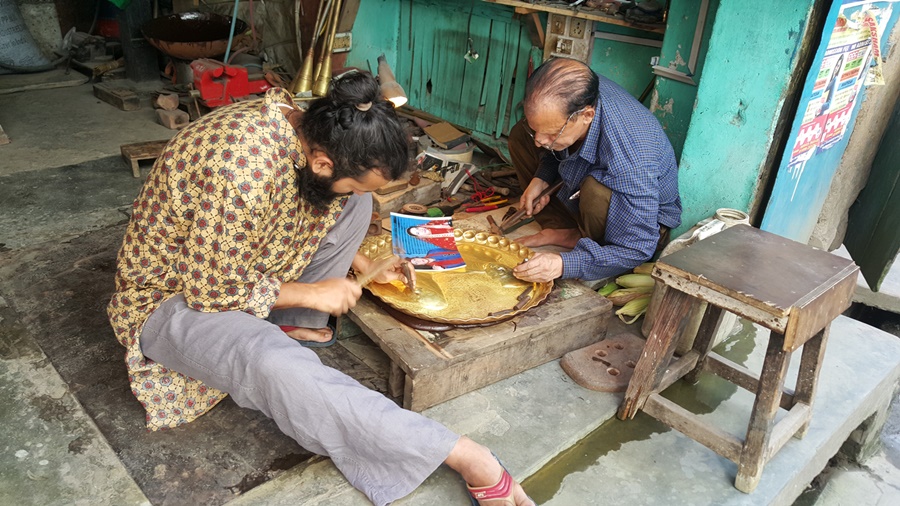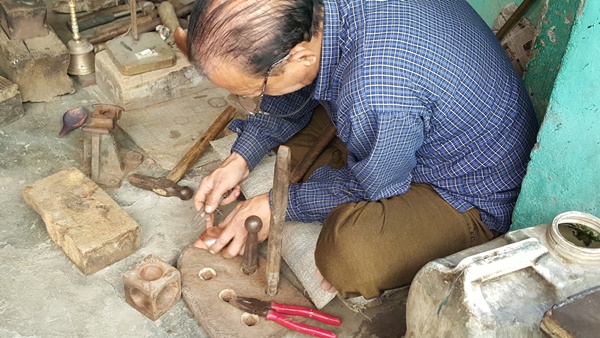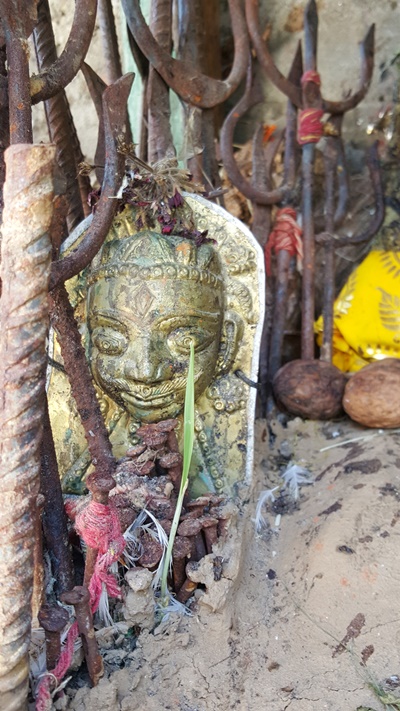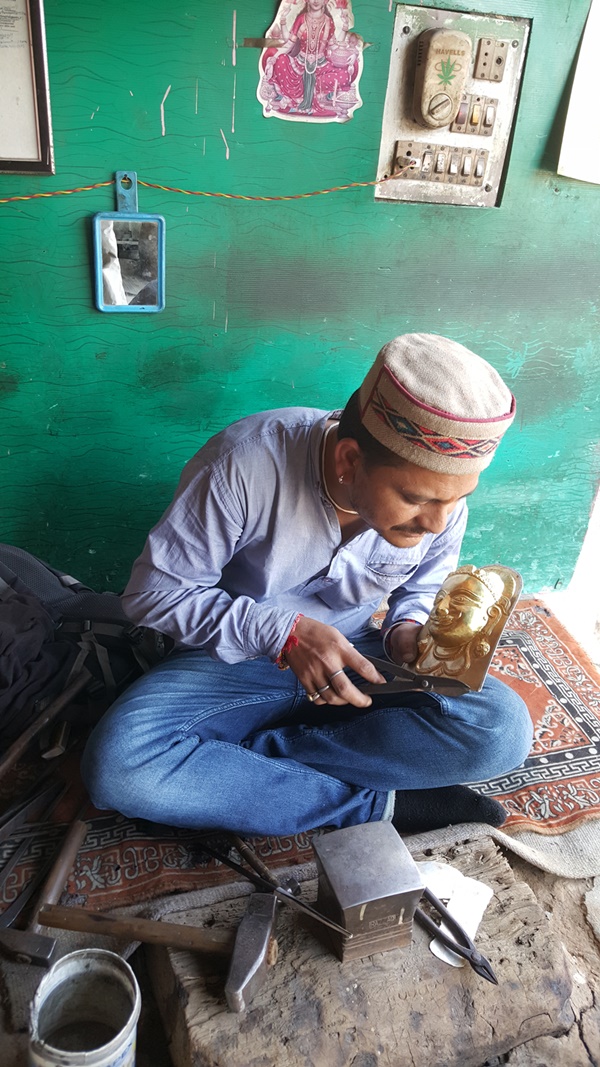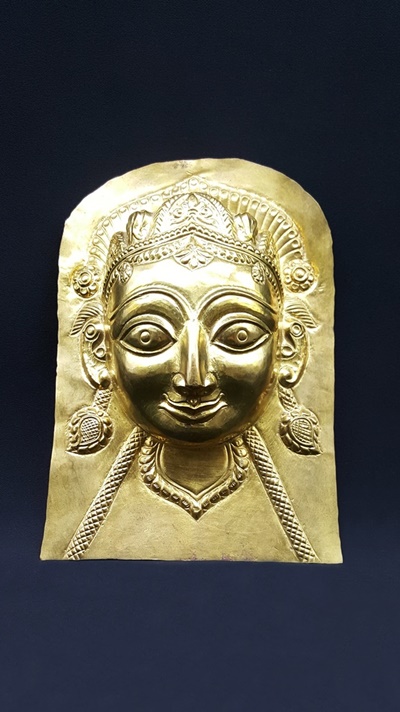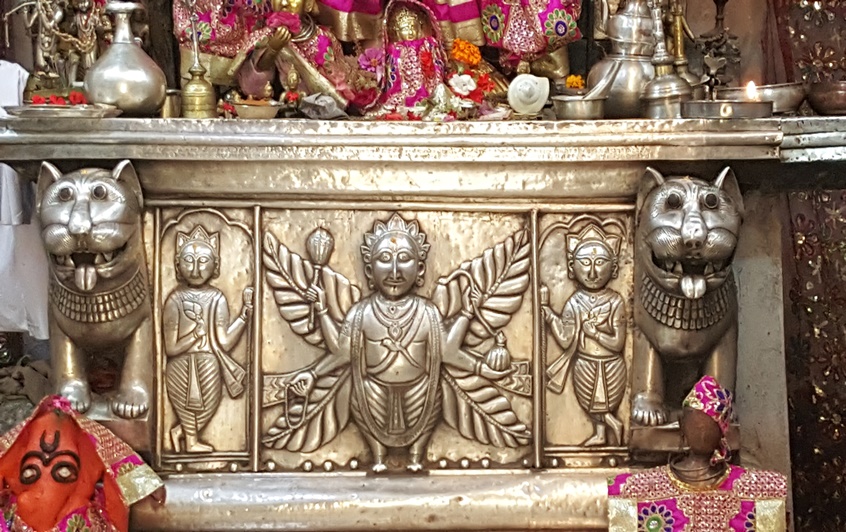
par Bertrand Bellaize, le 07 juillet 2022
Art Statue Inde : l’art Morhas ou l’art du masque
Il y a plus de mille ans, l’art Mohras s’est déployé dans l‘Himalaya dans les états actuels de l’Himachal Pradesh et de l’Uttarakand au nord de Dehli, les conditions géographiques, le relatif isolement a permis à cette culture de prospérer et de maintenir un style unique.
L’art Mohras, un art millénaire
Selon les historiens, l’artisanat du métal s’est développé, aux alentours de 600 après J.-C., grâce aux membres du palais de justice des rois de la région, qui étaient des experts en travail des métaux.
Ce sont les artisans Kashmiri qui ont introduit les techniques de travail du métal sur plaque : il peut s’agir de cuivre, de laiton, de fer, d’or, d’argent ... (cette technique est bien sur également aussi prisée en orfèvrerie) et bien souvent d’un savant assemblage de ces matières.
Cet art Mohras s’est pour une grande part magnifié dans l’art sacré et l’on peut s’émerveiller devant ses oeuvres dans la plupart des temples hindous mais également bouddhistes de la région : les représentations de Shiva, de Dévi (la déesse mère), de Durga sont majoritaires que ce soit sous la forme de statues (qui sont aussi présentes dans les autels familiaux pour les rituels quotidiens), de masques utilisant la technique du repoussé ou encore pour l’ornement des portes à l’entrée des temples.
De nombreux sanctuaires datant de plusieurs siècles témoignent de la maîtrise de cet art toujours exercé par quelques artistes, malheureusement de plus en plus rares, habitant la vallée de Kullu ou Chamba. Le temple de Vajreshwari Devi à Brahmaur ou le complexe de temples de Chamba, Laxmi Narayan datant du 10° siècle en sont de magnifiques témoignages.
Par ailleurs, ces masques peuvent être entrevus lors des fêtes religieuses où ils sont de sortie (Shivaratri, fêtes annuelles spécifiques à la divinité...) : ils sont alors emmenés en procession à travers la ville notamment lors du célèbre festival Dussehra à Kullu en octobre : placés sur des chariots de bois et richement parés de guirlandes de fleurs, des soieries de multiples couleurs chatoyantes, ils sont honorés par de nombreux fidèles venus leur rendre hommage et les fêter.
La technique de l’art Mohras est aussi utilisée pour la fabrication de bijoux et d’objets usuels tels que les lampes, les cloches, les instruments de musiques, la vaisselle.
Art Mohras, la réalisation des masques
Il est important de noter qu’avant de commencer une représentation sacrée, l’artiste hindou va, au préalable, effectuer plusieurs rituels lui permettant ainsi de se purifier : il s’agit pour l’artiste d’être le moins possible esclave de toutes pensées, émotions personnelles qui viendraient interférer avec son travail, sa relation au divin. Par ailleurs traditionnellement le sacrifice d’une chèvre avait lieu : le sacrifice était le pilier de la pratique spirituelle et le lien qui unit les hommes aux Dieux : c’est un échange, les hommes nourrissent les dieux qui reçoivent leurs bénédictions : bien être, prospérité, santé… Cependant pour le chercheur de vérité, le sacrifice est avant tout intérieur : sacrifices de ses croyances, de ses attachements … qui le mènera à la communion divine.
La technique utilisée se rapproche de celle de la cire perdue pour la réalisation des statues en bronze ou laiton : dans ce cas, en premier lieu, le futur masque est modelé avec minutie, en cire par l'artiste qui va lui donner sa forme définitive. L'ensemble est recouvert d'un mélange argileux qui sera cuit et deviendra ainsi le moule dans lequel l’alliage métallique sera coulé. Puis viendra un long et délicat travail de finition : ciselage, polissage… voir incrustation de pierres précieuses ou semi-précieuses.
Art Mohras, la technique du repoussé
Pour la technique du repoussé, l’objectif est d’obtenir un relief sur une plaque de métal en le repoussant de l’envers vers l’endroit. C’est une technique très ancienne qui remonte à l’antiquité (elle se nommait alors sphyrélaton ou travail du marteau).
Les artisans Morhas emploient de la cire comme support : ils vont, dans un premier temps, la chauffer sur une épaisse plaque de fer posée sur un foyer ouvert jusqu’à la bonne température (savoir-faire qui se transmet encore de génération en génération) : trop chaude, elle se liquéfie, trop froide, elle est trop dure et ne pourra pas non plus être malléable. Elle est malaxée puis étalée sur une planche en bois: l’épaisseur doit être uniforme afin d’adhérer parfaitement à la plaque de laiton qui va ensuite être ajuster par dessus.
A l’issue de cette tache essentielle de préparation, commence alors un long travail d’orfèvre consistant à façonner l’image souhaitée à l’aide de différents poinçons ou ciselets en métal … Il en existe de nombreux types classés en diverses catégories : les premiers servent à dessiner les motifs et façonner le métal, les seconds visent à donner de la « couleur « au métal : ils présentent un « grain spécifique » qui laissent une empreinte formant ainsi différentes nuances sur le métal.
L’artisan peut aussi travailler avec l’aide d’une sorte de petite enclume terminée par une boule ou une pointe courbée. L’objet à ciseler est alors placé sur la boule et martelé directement ou avec l’aide d’un poinçon.
Cet art nécessite de nombreux outils, outre les ciselets, l’artiste a besoin de pinces à découper, de nombreux marteaux avec différentes têtes, de cintreuses, de rouleaux, de presses, il doit aussi chauffer le métal...
Il reste très peu d’artisans en Himachal Pradesh, j’en ai pour ma part rencontré quatre, surtout dans l’art du repoussé : ils vivent principalement grâce aux commandes d’instruments de musique et d’objet usuels. Ils sont victimes d’une forte concurrence de la production semi-industrielle de statues en laiton provenant essentiellement de l’Uttar Pradesh.
Sources
Unknown Masterpieces of Indian Folk and tribal Art : Subhashini Aryan
Indian Sculpture Garace Morley
Indian Art Roy C Craven
Un et Multiple Sarah Combe
